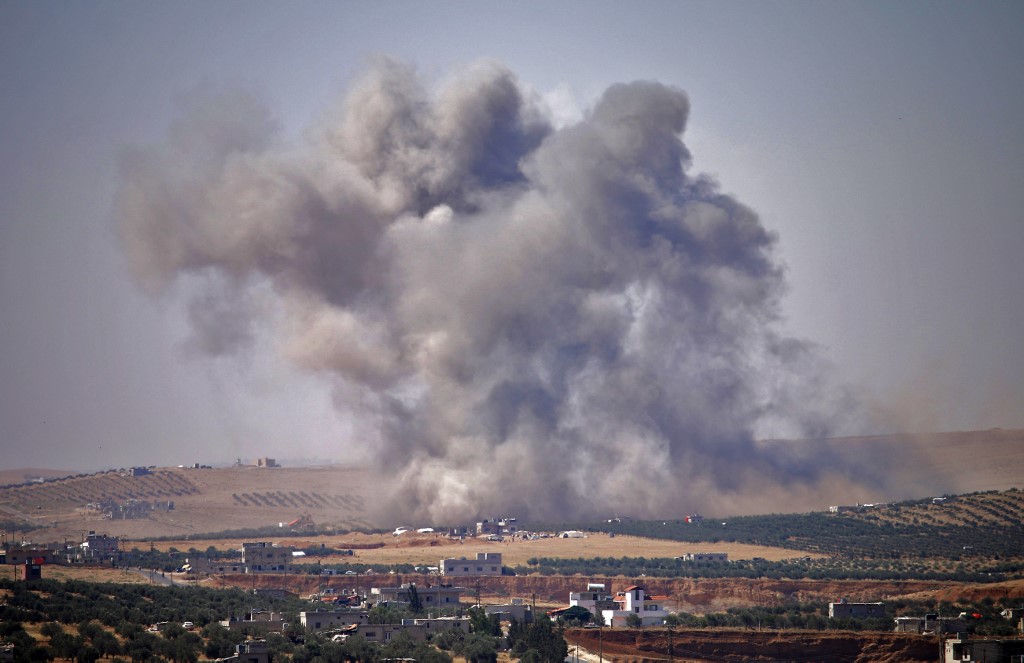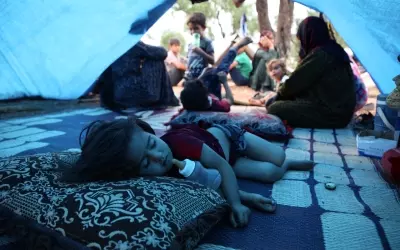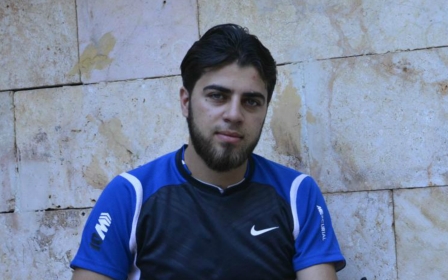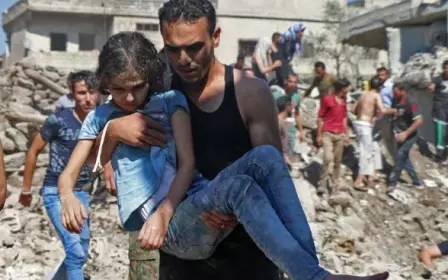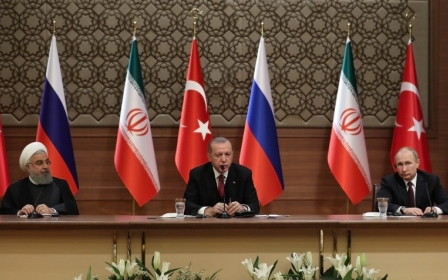Syria war: Who is behind the anti-regime attacks in Daraa?

Violent anti-regime activities in areas of southern Syria formerly held by rebels have flared up again.
While the hit-and-run attacks against pro-regime fighters and intermediaries re-emerged in November, the number of incidents reached a record high last month, with 38 incidents documented, killing 16 people and injuring 11 others.
While it is not clear who is behind them, these operations are especially significant in a region that the regime recaptured slightly over a year ago. This underscores that Syria is very much still in a state of war, and that peace will remain elusive without a comprehensive and fair political solution.
Amnesty guarantees violated
The gradual increase in regime violations appears to have motivated the renewed resistance after months of relative calm. After the regime recaptured the south in July 2018, largely through negotiations, its intermediaries and intelligence agencies started opening regional offices to process local residents’ pleas for clemency.
New MEE newsletter: Jerusalem Dispatch
Sign up to get the latest insights and analysis on Israel-Palestine, alongside Turkey Unpacked and other MEE newsletters
The process theoretically provided general amnesties, which were supposed to exempt signatories for six months from obligatory military conscription. Yet, despite those guarantees, the regime has continued to arrest local residents - both civilians and former rebel fighters - even as they were in the process of turning themselves in. Men have also been called up for enlistment before the six-month grace period expired.
The secrecy makes it difficult to verify whether this group actually has operational capabilities, or is just taking credit for attacks carried out by unidentified individuals
In October 2018 alone, 68 people were reportedly detained, while more than 30,000 men, both new recruits and reserve forces, have reportedly been called upon to enlist.
In response, occasional anti-regime attacks using guerrilla tactics have re-emerged, becoming more frequent since the start of 2019, with an average of 20 attacks a month. According to local sources, close to 100 operations and assassination attempts have taken place in the past three months, killing dozens. Those who were targeted included pro-regime forces, former rebels co-opted by the regime, and local intermediaries.
Easy targets
Notably, some targets appear to have been chosen randomly for operational reasons - ie, they were easy targets - while others seem to have been prioritised because of their reputations.
A military intelligence checkpoint between the towns of al-Karek and al-Gharieh was apparently attacked because of the activities of its personnel, including arresting local residents and soliciting bribes.
A group calling itself al-Muqawama al-Shabia (the Popular Resistance) has emerged to claim credit for many of these operations and to announce a new phase in the fight against pro-regime forces. The group gave its first public interview to the Arabic news website Geiroon in November, declaring war against the regime, its local intermediaries and Iranian-backed militias operating in the southern region.
A spokesperson for the group, identified by the pseudonym Saif al-Horani, claimed the group of former rebel fighters and other men facing obligatory conscription was continuing the rebellion. He said the movement had no affiliation - political, military or financial - with any foreign state or entity.
Nonetheless, locals and observers alike have disputed whether this resistance group actually exists, and if so, who is behind it. People, including former rebels, do not seem to know any of the members involved, and are sceptical that the group exists beyond social media.
Others, however, point out that the group might be a regime trap to capture those who still want to actively fight back. The secrecy makes it difficult to verify whether this group actually has operational capabilities, or is just taking credit for attacks carried out by unidentified individuals who are staying out of the spotlight.
Given the multiple threats of infiltration, leaks and capture, it makes a great deal of sense that those behind the attacks might want to operate covertly.
A ticking time bomb
The scale and frequency of the anti-regime guerrilla attacks leaves little doubt that some sort of local resistance is actively operating in Daraa. Thus, it remains a reasonable possibility that these attacks, or at least some of them, were carried out by different individuals or groups without any coordination.
Locals have the motives, skills and resources needed to conduct such operations separately. They resent the regime, have little hope for the future and are equipped with the military experience and weapons to fight back (the majority did not hand in their light weapons during negotiations).
It is difficult to predict whether anti-regime activities will increase and destabilise Daraa, where the Syrian uprising first began in March 2011. But all the conditions needed for stiffer local resistance to re-emerge are in place.
Defusing that ticking time bomb and stabilising the region can only be achieved by reaching a fair, just, UN-backed political solution that addresses the root causes of Syria’s conflict.
The views expressed in this article belong to the author and do not necessarily reflect the editorial policy of Middle East Eye.
Middle East Eye delivers independent and unrivalled coverage and analysis of the Middle East, North Africa and beyond. To learn more about republishing this content and the associated fees, please fill out this form. More about MEE can be found here.



